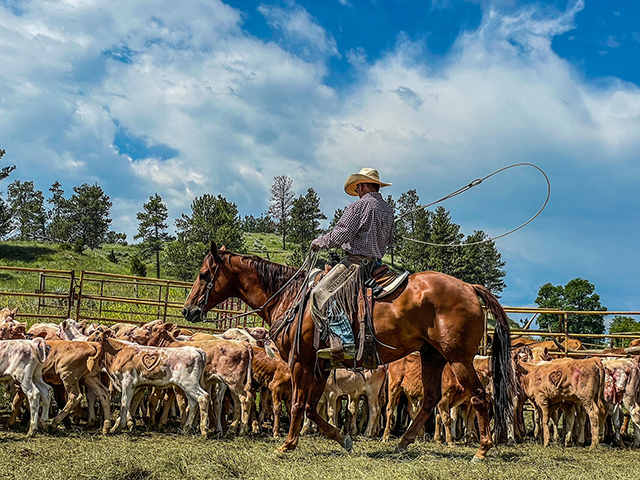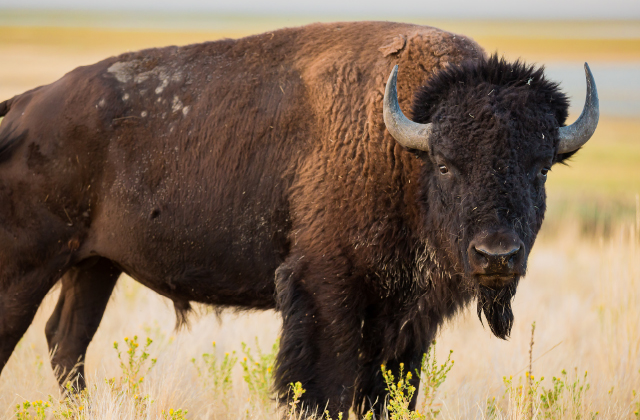Farm & Ranch
Hoffman’s Poultry: Passion and Production

When the Covid-19 pandemic struck, the country experienced a major shift in food production as Americans began seeking natural, organic sources. This trend saw a major rise in the poultry industry, as many turned to raising chickens as a low-maintenance daily food source.
At the time, Justin Hoffman had just begun to return to the agricultural roots in which he was raised, founding Hoffman’s Poultry. Since that time, the business has grown exponentially as a family-run operation that offers chicks, started pullets, and ready-to-lay hens to customers primarily in North Texas and Southern Oklahoma.
Raising poultry has not been an easy task, as they have gotten a taste of just how hard the industry truly is, but it is a business and lifestyle that the Hoffmans have come to appreciate and love, with no plans of slowing down.
“Farmers and ranchers, especially those who have prevailed for years, are my heroes. In the five years since the founding of Hoffman’s Poultry, I am beginning to comprehend what a successful farmer is,” Hoffman pondered. “It’s a person with exceptional drive, self-motivated, jack-of-all-trades, but also an expert in all, with a salt-of-the-earth work mentality. A farmer is humble, a strategic partner with other farmers and local businesses, and who has values beyond themselves. Some say it’s a lifestyle that sounds miserable for all work and no play. I disagree. I love it. I love the challenge, the strain on your daily motivation to keep going, the building of relationships you must cultivate, and the reward in satisfying a customer and the financial compensation that we created ourselves. It’s an exhilarating experience that I want to pursue as long as I’m alive.”
From the Beginning
Hoffman was raised on 120 acres near the small town of Vashti, Texas, in the southeastern part of Clay County. His parents, Bryan and Janice Hoffman, showed their children a strong work ethic through their example as they both worked off-farm jobs but always maintained side hustles.
“My dad instilled in us that if there was daylight, there was a dollar to make. My parents instilled a great work ethic in my two brothers and me, and I am forever grateful,” Hoffman said.
To read more, pick up a copy of the June issue of NTFR magazine. To subscribe by mail, call 940-872-5922.
Farm & Ranch
Ag Elsewhere: Wyoming

By Tressa Lawrence
Ranchers across northeast Wyoming and the surrounding areas saw record moisture levels in 2023. The year 2024 has seen significantly less moisture to date.
Farm & Ranch
Ag Elsewhere: Montana

By Lindsey Monk
People are finishing up brandings. Here, Danny Walter is shown getting it done.
Farm & Ranch
Animal Disease Traceability

By Barry Whitworth, DVM
On July 6, 2020, the United States Department of Agriculture Animal and Plant Health Inspection Service (APHIS) posted in the Federal Register a proposal that radio frequency identification tags be used as official identification for cattle and bison. Following a period for public comment, the USDA APHIS released a statement on April 24, 2024, with the amended animal disease traceability (ADT) regulation for cattle and bison. The full press release may be found at https://www.aphis.usda.gov/news/agency-announcements/aphis-bolsters-animal-disease-traceability-united-states. Under the new rule, cattle and bison will need to be identified with tags that are both visual and electronic.
The USDA defines ADT as knowing where diseased and at-risk animals are, where they have been, and when the animal disease event took place. A system that allows for efficient traceability of livestock in the United States is essential for animal health and reducing the economic effect of a foreign animal disease outbreak and other diseases on livestock producers as well as others whose well-being depends on livestock production.
To read more, pick up a copy of the July issue of NTFR magazine. To subscribe by mail, call 940-872-5922.
-

 Country Lifestyles1 year ago
Country Lifestyles1 year agoScott & Stacey Schumacher: A Growth Mindset
-

 Country Lifestyles7 years ago
Country Lifestyles7 years agoStyle Your Profile – What your style cowboy hat says about you and new trends in 2017
-

 Equine10 months ago
Equine10 months agoThe Will to Win
-

 HOME7 years ago
HOME7 years agoGrazing North Texas – Wilman Lovegrass
-

 Country Lifestyles4 years ago
Country Lifestyles4 years agoAmber Crawford, Breakaway Roper
-

 Outdoor9 years ago
Outdoor9 years agoButtercup or Primrose?
-

 Country Lifestyles8 years ago
Country Lifestyles8 years agoDecember 2016 Profile, Rusty Riddle – The Riddle Way
-

 Country Lifestyles8 years ago
Country Lifestyles8 years agoJune 2016 Profile – The man behind the mic: Bob Tallman







